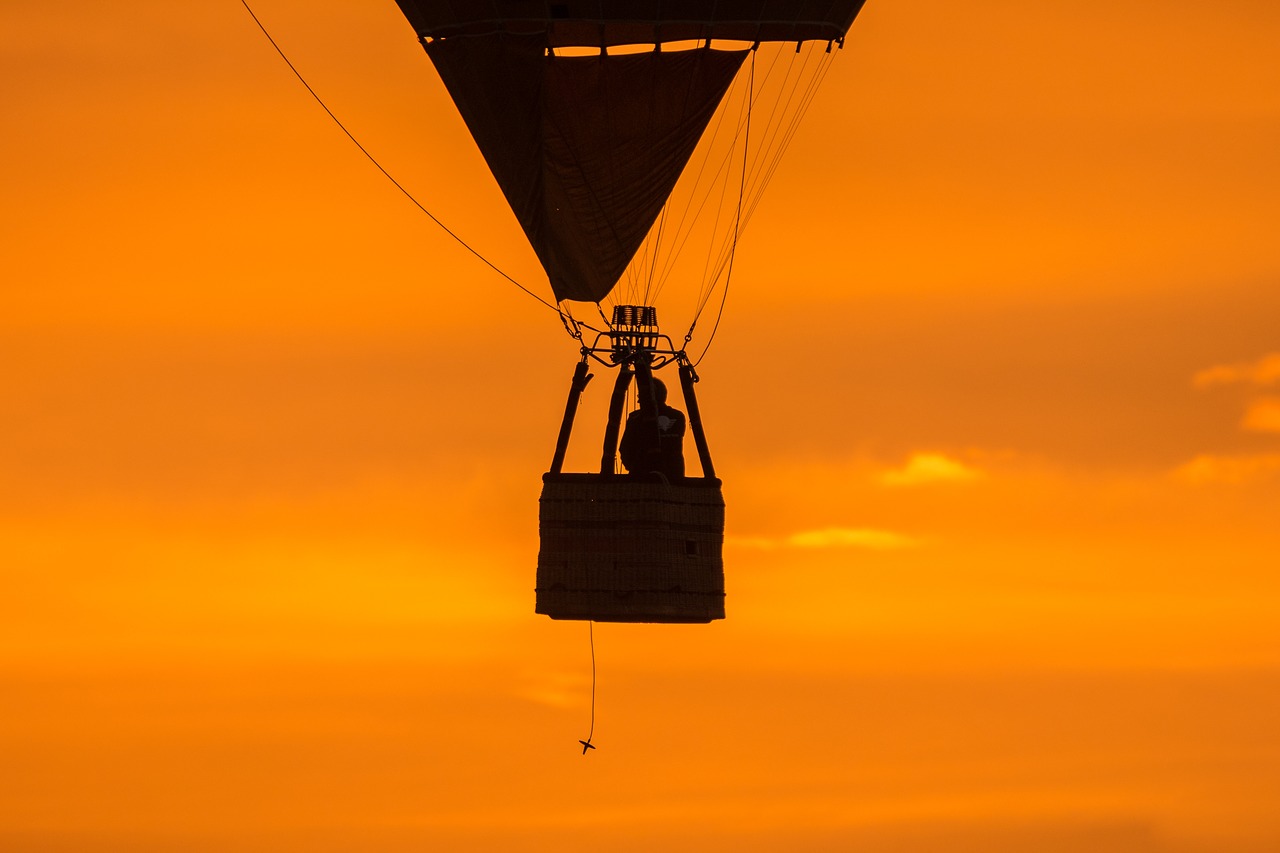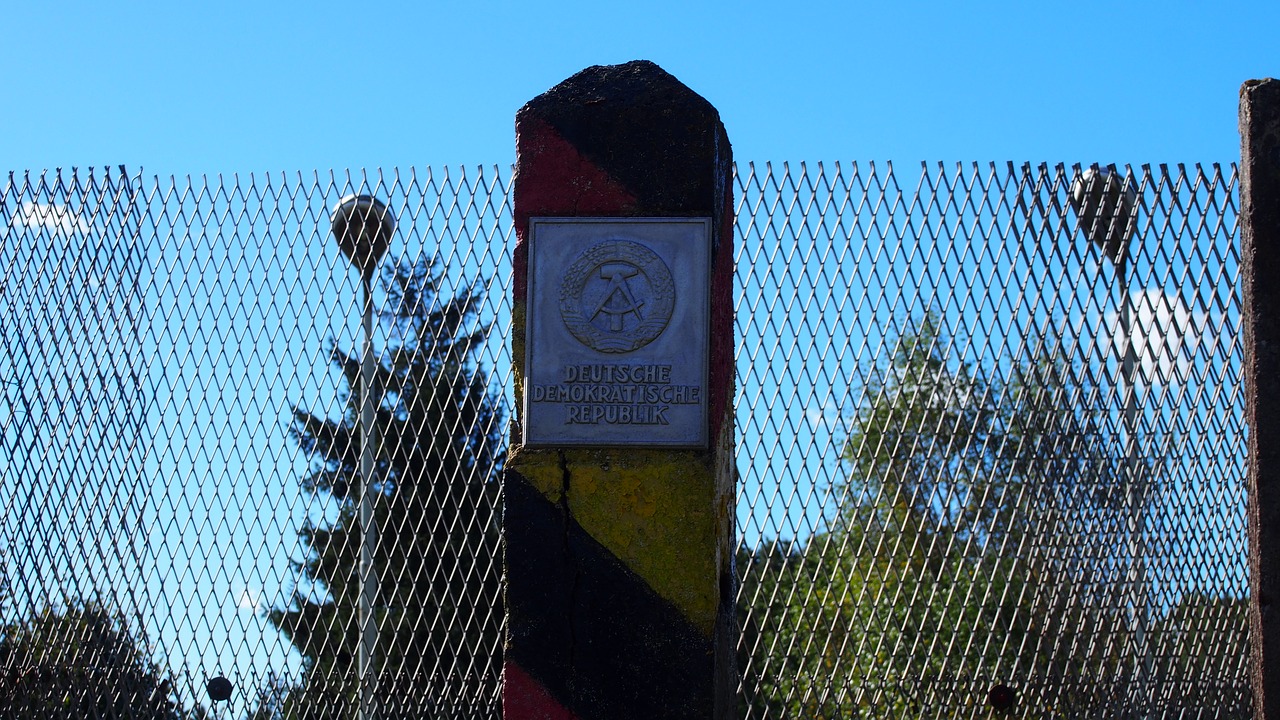
The German-German air border was far more massive than just air. Many successful attempts took place “under” the border, numerous tunnels were dug, and if they were not betrayed or found by chance, the method was sometimes successful. Other fugitives tried hiding in vehicles, but the border troops soon knew almost all Western vehicle types intimately.
Some fugitives bypassed the border installations by escaping across the Baltic Sea. The intensive surveillance also made this route very risky. Escaping via the neighbouring countries to the east was also anything but easy.
So there was still the way over the Wall. Ladders, climbing hooks or the “robber ladder” were used. Sometimes they managed to escape when the Wall was still surmountable, but often it ended in fire from the border guards. At the German-German border there were self-firing devices and minefields for this purpose.
So it was only natural to look even further up. Time and again there were aircraft hijackings and occasionally agri-flyers used their crop dusters to escape.
Besides these “heavier-than-air” aircraft, there was still the possibility of building one’s own “lighter-than-air” apparatus. However, this was also associated with major problems. First of all, one had to have access to suitable materials; in the GDR, one could not simply go to a shop and buy balloon silk.
The initiators of the most famous balloon escape, Peter Strelzyk and Günter Wetzel, were employees of the plastics factory VEB Polymer Pößneck. In the Stasi state, the greatest risk was revealing oneself to others. All too often, the supposedly reliable “friend” was an informal collaborator of the state security.
A first attempt to build a balloon failed, the lining material from a leather bag factory, which was obtained in a roundabout way, was not tight enough. Months of painstaking work were in vain.

The two men then pretended to be members of a sailing club in a Leipzig department stores’. This way they managed to get enough fuel for their second balloon. But the balloon had a new design flaw: the gondola was too small for both families. So only the Strelzyks attempted to escape in the night of 3 to 4 July 1979. They took off from a meadow near Heinersdorf. But the weather was unfavourable and the balloon fabric became soaked with water. After little more than half an hour, the flight ended two kilometres from the border fortifications. They landed in the forest near Hornsgrün. The circumstances made it impossible to salvage the hot air burner and other things. But they were already happy to be able to return home undetected. In a way, the paranoia of the GDR officials helped them, because the forest was in a restricted area that no one was allowed to enter: A People’s Police officer found the balloon while collecting wood, but since he did not have a permit to enter the forest, he kept quiet. It was not until 20 July that a hunter found the remains and the Stasi immediately launched a manhunt. On 14 August, the Stasi distributed information about the found parts and called on the public to help. However, the nature of the “serious crime” was not addressed; it was known that Republikflucht had many sympathisers.
The two families set to work on a third balloon. The material was bought in small quantities from various shops. Umbrella silk, tent nylon fabric, taffeta and other fabrics were sewn into the envelope. This balloon was 28m high with a diameter of up to 20m. After the failure, they had built a suitable gondola this time. A platform of 140 x 140 cm received four 80 cm high corner posts, a clothesline formed the “wall”. The centre was occupied by four propane bottles.
No sooner was the balloon ready on 15 September 1979 than there were favourable weather conditions, especially in terms of wind direction and strength. The same meadow as the first escape attempt served as the launch site. The escapees huddled on the narrow platform with their backs to the clothesline – and the flight began. After 28 minutes, the balloon landed. The women and children hid and the two men looked around. After some time, they met a Bavarian police patrol who confirmed: they had landed in a forest near Naila in the district of Hof!
The western media went into overdrive. The escape was perceived as a sensation. The friendship of the two families did not survive the hype. Strelzyk opened an electrical shop in Bad Kissingen, Wetzel worked as a foreman in a car repair shop. A friend of Strelzyk’s was imprisoned as an alleged escape helper, ransomed by the Federal Republic in 1982, he took a job in Strelzyk’s shop. It later turned out that he had been recruited by the Stasi to monitor the successful fugitives. The MfS also kept the Wetzels under surveillance. Operation “Pear” was launched to make life hell for the refugees. The Stasi was vengeful.
After the fall of the Wall, the Strelzyks moved back to Pößneck. Peter Strelzyk died on 11 March 2017 at the age of 74.
The balloon envelope is to be exhibited in Regensburg at the Museum of Bavarian History from 2019.
As one would expect, Hollywood took up the story. Just one year after the flight, a film entitled: “With the Wind to the West” was produced by Disney and released in cinemas in 1982.
The families had sold the rights to Disney and so it was not easy to get the opportunity to remake the film. Michael Herbig did not give up and so a German cinema production was released in September 2018 under the title Balloon.
Both films have their strengths and weaknesses. As is so often the case, the events have been changed. The 2018 version, for example, shows only two balloon constructions and the construction time considerably shortened. Herbig focuses fully on the drama of the escape attempts, but the everyday situation of life in the GDR comes up a little short. The role of MfS officer Seidel is given a prominence that some critics considered disproportionate. That the drugs found in the second balloon lead the Stasi to the Strelzyk family and that the search of their flat takes place shortly after the launch is due to the drama and the scriptwriter. But it is precisely this drama that makes “Balloon” a great film.
For “Bully” Michael Herbig, the film, which was released in German cinemas on 27 September 2018, is the fulfilment of an old dream. Years before the rights were cleared, he had already met with the GDR refugee Günter Wetzel. He consulted the MfS files and insisted that the two balloons seen in the film not be animated on the computer. Instead, he had them recreated one-to-one. “Balloon” is his first production in the dramatic genre, “Bully” overcame all challenges with aplomb and achieved a result worth seeing.
With the question of a Bavarian: “How many more are coming?” the film allows itself a joke on the refugee crisis of the 21st century. In fact, the GDR refugees were not always welcomed with open arms in the West.
History knows of several balloon flights, successful and failed. On 7 October 1870, the Minister of the Interior, Leon Gambetta, left besieged Paris in a balloon, the “Armand-Barbès”.
In 1981, a couple in Sigridshorst near Teltow built a tunnel from the basement of their home. But after 3 months the tunnel was still several hundred metres too short. They gave up. The couple now applied to leave the country for themselves and their 10-year-old son, but this was rejected. But the idea of escape was not dead. They started building a balloon.
In May 1982, the planned escape was betrayed by a distant relative whom they had asked for gas. During a house search, the tunnel was discovered in the basement. Three months later, on 19 July 1982, the Potsdam-Land District Court sentenced the couple in a non-public hearing “for multiple preparation for unlawful border crossing in a serious case” to three years and two years and six months in prison respectively. The son was taken away from them.
The last GDR balloon escape was even more tragic. It ended fatally for Winfried Freudenberg on 8 March 1989. Caught by surprise while filling the envelope with gas, his wife recoiled at the last moment, so he flew alone. The balloon, too light due to the lack of weight, shot up into the air. The seat was a broomstick, straps held the man in place. The clothes were too thin for the 3,000m altitude he reached, worse, the home-made gas release valve failed. At around 7am, he was hovering over Tegel airport. His ordeal lasted five hours. Walkers later saw the balloon over Teufelsberg. As the balloon slowly approached the border on the other side of West Berlin, the desperate man tried to climb up to the envelope. He managed to slit the fabric, but his strength left him. He fell to his death over Zehlendorf. The shell got caught in trees on Potsdamer Chaussee. A few minutes separated Freudenberg from freedom.
The Stasi began the investigation as “Vorgang Regler” under the registration number XX/605/89. The Stasi investigated as if the GDR world was still in order. Even after the Wall was opened, the staff continued to work on the case. It was not until 20 November 1989 that the spying on Freudenberg’s relatives and acquaintances ended.
If he had used a hot air balloon instead of a gas balloon, Freudenberg would probably have succeeded. His escape attempt ended the chapter of GDR balloon escape attempts.
The successful cinema release of “Bully” Michael Herbig’s “Balloon” shows how deeply the subject has remained in people’s consciousness. Even almost 40 years after the events, the balloon escape still moves people.



